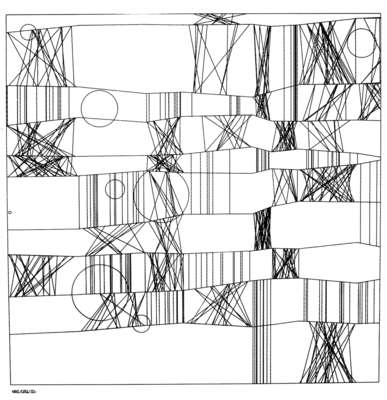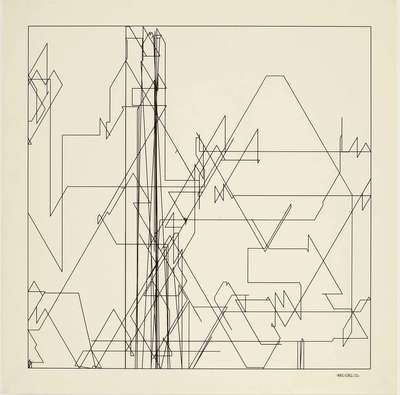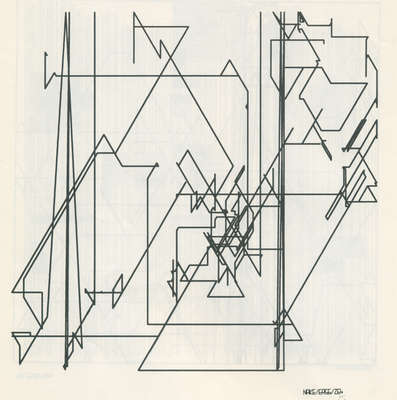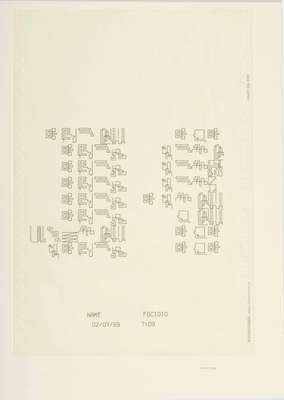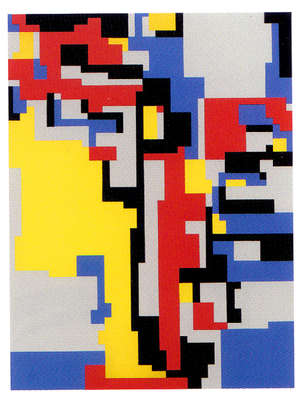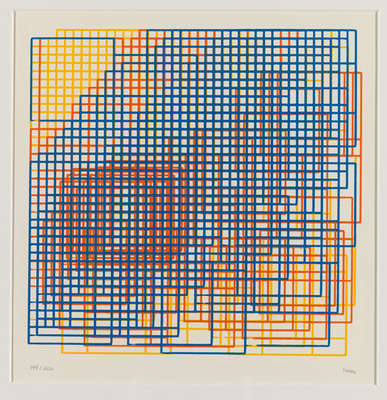Frieder Nake belongs to the founding fathers of digital or, better, algorithmic art, which was called “computer art” when it emerged in the first half of the 1960s. He produced his first works in 1963. He first exhibited his drawings at Galerie Wendelin Niedlich in Stuttgart from 5 to 26 of November, 1965.
His early work was influenced by Max Bense’s Information Aesthetics, an approach to the field of traditional aesthetics that was based on the mathematical concept of “information” as in the theory of Claude E. Shannon and others. From 1963 until 1969, he went through a succession of increasingly complex programs, using technical support from machine language via Fortran IV and Algol 60 to PL/I. His main work phases are identified by collections of programs called “compArt ER56” (1963-65), Walk-through-raster (1966), Matrix multiplication (1967/68), Generative aesthetics I (1968/69). He declared not to continue producing computer art in 1971 when he published a note under the title, There should be no computer art in page, the Bulletin of the Computer Arts Society. His reasons were mainly of political origin: He did not see how he could actively contribute to computer art and, at the same time, be a political activist against capitalism. He resumed publishing on computer art in the mid 1980s with the break-down of the radical left in Western Europe. With the start, in 1999, of his project »compArt: a space for computer art«, Nake returned to his roots as a theoretician, writer, creator, and teacher (and artist) in the domain of digital art and way beyond. He was head of »compArt: Center of Excellence Digital Art« until the end of this very lively and successful group on art, science, and technology (until 2016).
Frieder Nake has been a full professor of computer science at the University of Bremen, Germany, since 1972. From 2005 to 2019, he has also been teaching at the University of the Arts, Bremen. His teaching and research activities are in computer graphics, digital media, computer art, design of interactive systems, computational semiotics, and general theory of computing. Nake was represented at all important international exhibitions of early computer art. He has published in all the areas mentioned above, with a preference for computer generated images.
His position and approach may be characterized by the sightly ironic statement "The drawings were not very exciting. But the »principle« was!“ (Nake 2004/05). Or by, “Think the image, don’t make it.”








